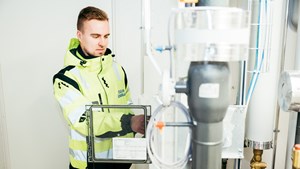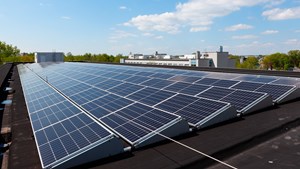Carbon-neutral district heat comes from renewable energy sources
District heat from renewable energy sources is a circular economy statement. Oulun Energia’s carbon-neutral district heat cuts housing emissions by as much as 60%.
Carbon-neutral district heat Onni gives Oulun Energia customers a chance to choose renewable energy sources to provide their district heat.
The share of carbon-neutral district heat has been assured by the Energy Authority's guarantee of origin system standards, which ensure the carbon neutrality of district heat supplied to the customer.
The production of carbon-neutral district heat mostly utilises forest industry side streams, i.e. biomass originating from materials that are unsuitable for paper, board or sawn timber production The biomass quickly regenerates and does not release more carbon dioxide into the atmosphere than the natural carbon cycle.
The speed of the carbon cycle is at the heart of carbon neutrality. The faster a fuel regenerates, the faster the carbon it releases is sequestered back into the forests and soil. The speed of the cycle and what the actual emissions would be with regard to harvesting residues for example, determines whether the fuel is considered to be a renewable energy source. The definitions are based on EU legislation.
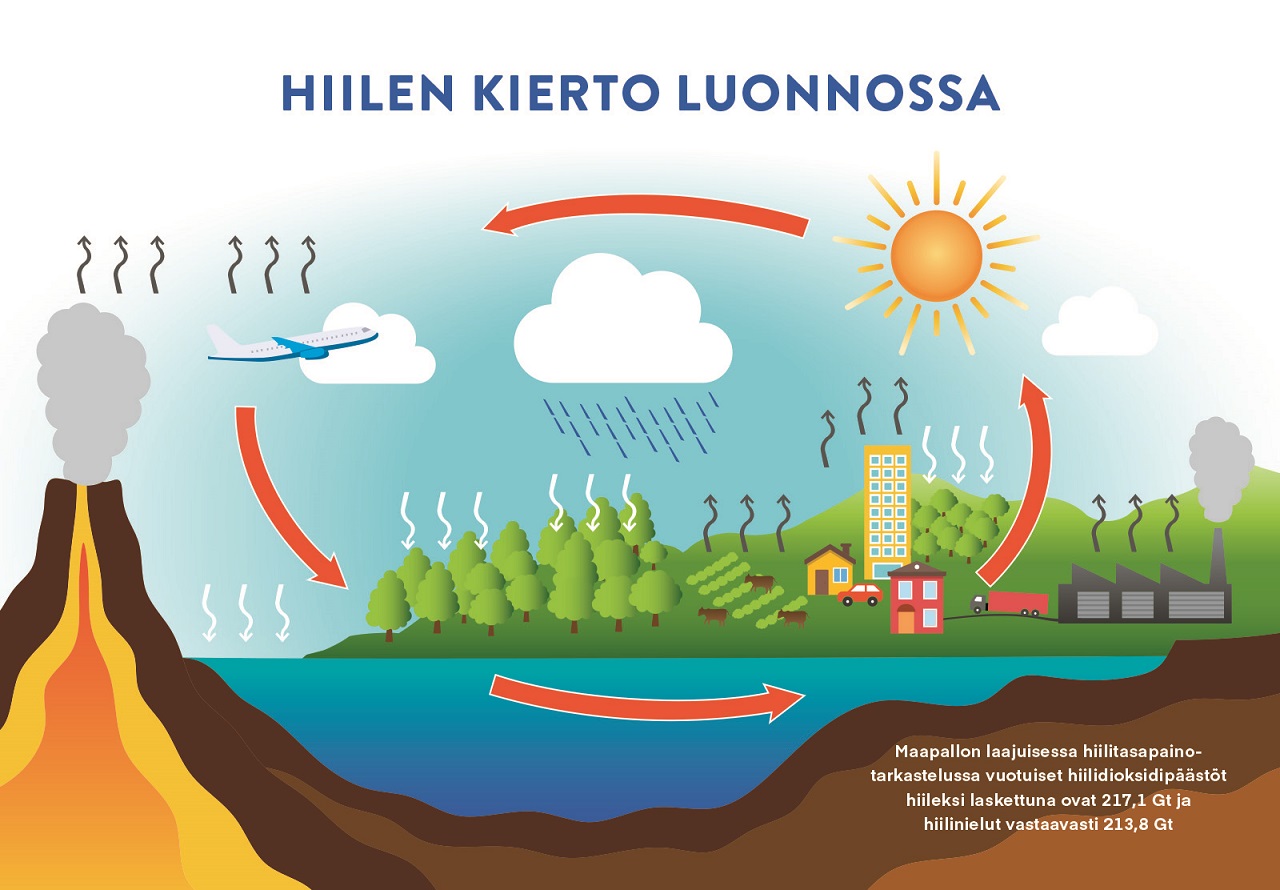 Photo: Olli Pekka Siira's study (2019)
Photo: Olli Pekka Siira's study (2019)
In a carbon neutral process, circular economy side streams, such as non-recyclable waste, that are comparable to renewable energy sources can be converted into energy in power plants.
Recovery of waste heat
District heat is produced in combined heat and power (CHP) production. The steam moving the turbine producing electricity at the Laanila biopower plant is condensed into district heat water. The recovery of condensing heat can even double the efficiency of energy sources compared to electricity production alone.
Oulun Energia’s carbon-neutral district heat is recovered also from, for example, the waste heat created from cooling, such as the heat from the refrigeration systems in stores. The interplay between industry and energy production allows the surplus energy used for cooling to be utilised as accurately as possible.
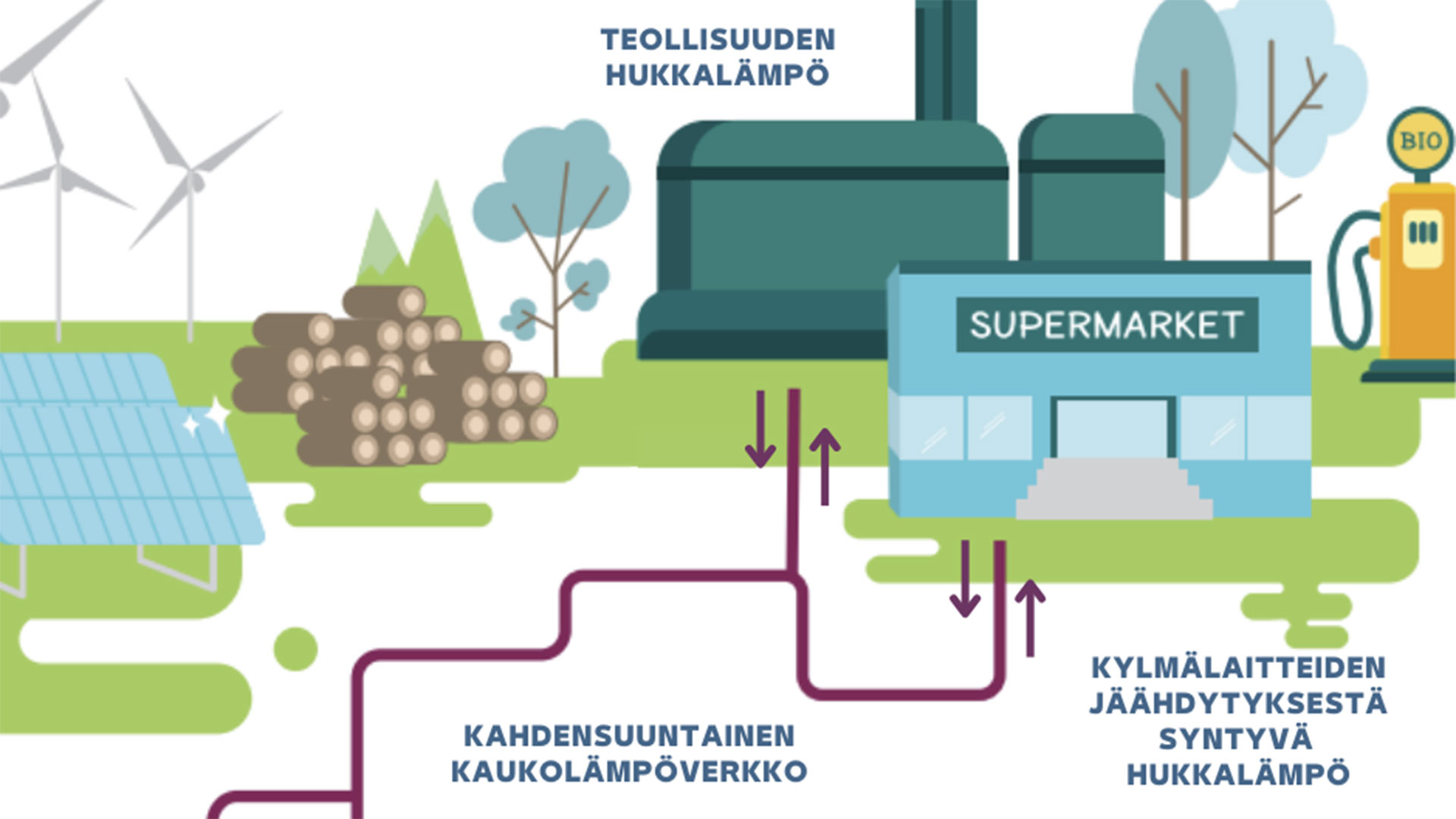
The photo was originally published in Oulun Energia’s customer magazine 3/2021. Illustrations by Erika Neitola.
“Utilisation of waste heat already plays an important role in the production of carbon-neutral district heat and will continue to do so going forward,” says Kimmo Alatulkkila, Heating Services Manager.
“We want to actively, yet responsibly, reduce incineration-based ways of producing heat. Responsibility is a megatrend, which energy companies have to include also in their product offerings,” Alatulkkila explains.
Phasing out fossil fuels
Oulun Energia has greatly reduced its use of fossil fuels in recent years. Peat is the most-used renewable energy source but the company has decided to stop using it completely in energy production in 2024.
Renewable or comparable fuels already account for 71 % of the energy sources used by the company. As an example, the solid recovered fuel (SRF) used in district heat production is made from separately recovered energy waste and non-recyclable paper, wood and cardboard waste.
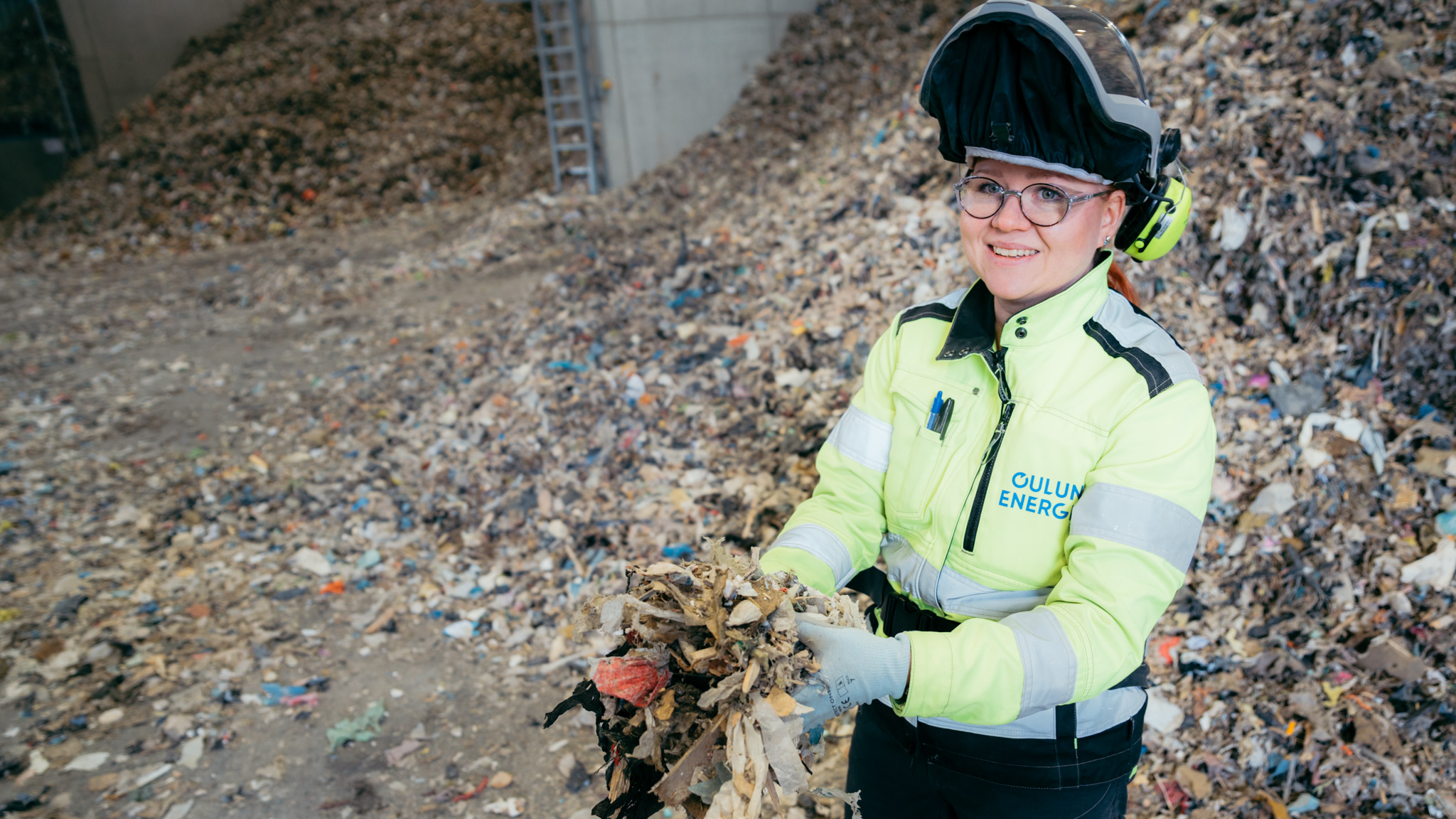 Solid recovered fuel (SRF) at Oulun Energia’s circular economy company Syklo’s waste sorting facility.
Solid recovered fuel (SRF) at Oulun Energia’s circular economy company Syklo’s waste sorting facility.
“New boiler technology at the Laanila biopower plant, opened in 2020, means that energy can be produced solely from renewable fuels,” says Mikko Vesterinen, Production Director at Oulun Energia.
“Whereas the earlier ratio was 50 % biofuel and 50 % peat, this power plant needs no peat at all. As much energy as possible is also recovered from the flue gases for the district heat network,” Vesterinen says.
Actions for the future
Since heating earlier accounted for two thirds of emissions in housing, the form of heating is of huge importance from the environmental aspect. Carbon-neutral district heat is an eco-friendly alternative since it can cut housing emissions by as much as 60 %.
Last year, Oulun Energia produced more than 1,000 GWh of carbon-neutral district heat. Public actors in particular are interested in a carbon-neutral alternative as part of their own environmental ambitions.
“Providing carbon-neutral district heat for business and private customers is one step on the journey towards the company’s ambition of carbon neutrality in 2030,” says Kimmo Alatulkkila.
“We want to be involved with implementing responsibility measures on behalf of customers, who are increasingly aware of where heating energy comes from. Carbon-neutral district heat makes it easy to make an eco-friendlier choice. Our job is to ensure that the system is able to provide customers with energy suitable to customer needs,” Kimmo Alatulkkila adds.
Read more about carbon-neutral district heat as an additional service


